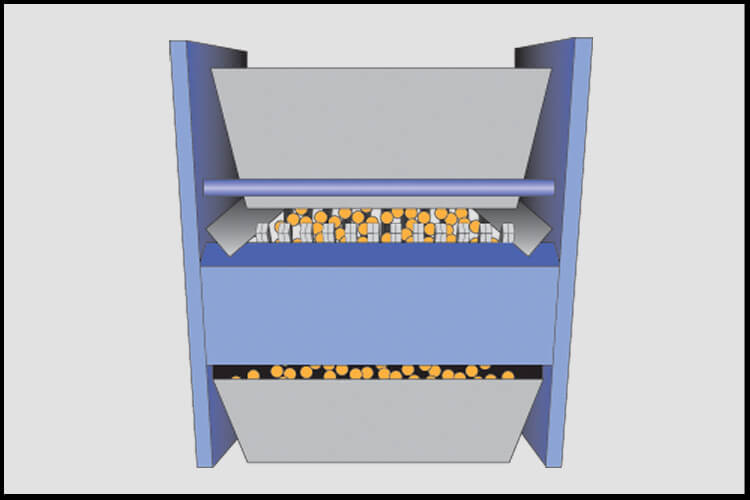
In an industry crowded with various splitter types, it’s difficult to determine which is best to meet your specific needs. The sample division plays an important role in sample testing and analysis. A sample splitter allows a representative sample to be separated from a bulk quantity without changing its properties.
Using the proper splitter can help you reduce variability in the lab significantly. Check out our helpful guidelines so you can choose the best splitter to meet your needs and get the job done error-free.
Consider material type first.
Splitters are the best choice for representative sampling of dry, flowable materials. As a first step, you should consider particle size, shape, density, and moisture content when selecting the correct equipment. In fact, particle size dictates chute width. Adequate chute width is three times the largest dimension of the largest particle. This ensures that two of the largest particles in a sample can travel down the chute without becoming lodged (bridging). Bridging causes the material to back up and be forced into adjacent chutes, introducing bias error into the samples. Conversely, chutes that are too wide may not allow proper separation and will produce less accurate splits.
Review test specifications.
When it comes to particular splitting specifications, some test methods specify a certain number of chutes or hopper capacities. For example, some industries may require a steeper chute angle to aid the splitting of lower density particles like coal or coke, and others may require a minimum number of chutes. Other test methods are less restrictive and allow different splitter configurations, as long as the specified criteria are met.
Determine size and capacity requirements.
The fewer splits required when dividing materials, the better. A splitter with insufficient capacity requires additional dividing, which increases the likelihood of errors. It also requires more time and labor to perform multiple splits.
Standard test methods may specify a range of weight or volume for the final test specimen, or size may be limited simply by the available space in the test chamber. Estimating what fraction of the original sample the final specimen will determine the optimal number of passes. If the original sample is several cubic feet in volume and the test only requires a cup to be used, a large splitter is necessary and multiple splitting passes will be required. As the size of the sample is reduced, an additional, smaller splitter may be required to maintain accuracy.
Get familiar with important features.
When it comes to splitters, versatility is important. You need to consider the features that are most important to you. Here are some value-added features that will enhance the efficiency of your sampling process.
Hoppers with gate release feature - This is the best feature available for a sample splitter because it holds all materials in the hopper until they’re properly distributed and leveled. The gate-release hopper reduces human error that occurs when the material is poured unevenly into an open hopper and flows through a portion of the available chutes.
![]() Material poured unevenly into an open hopper introduces sample bias.
Material poured unevenly into an open hopper introduces sample bias.
Adjustable chute bars - This is important for a user with samples of varying maximum particle sizes. Adjustable chute bars allow the chute widths to be changed for a range of materials, saving money and floor space compared to having multiple units.
![]() Adjustable chute bars can be optimized for different materials.
Adjustable chute bars can be optimized for different materials.
- We recommend Gilson Universal Splitters, which feature gate release hoppers and adjustable width chutes that offer the versatility, adaptability, and total user control you need. This line of splitters has a row of precision-machined aluminum bars to adjust chute width and distribute material evenly into sample pans. This sophisticated design allows for the chute opening size to be modified quickly to the optimum width of three times the largest particle size.
Splitter materials - Some applications with food-grade or reactive materials require sampling equipment to have contact surfaces that pose a low risk for contamination.
- We recommend using one of the Gilson Universal Sample Splitters or Mini-Splitters available with most or all contact surfaces of stainless steel, or our new, all stainless steel Gilson Precision Splitters.
Dust control - Some materials are prone to creating nuisance dust during handling and splitting, which presents a potential health risk to employees.
- We recommend our SP-10 Totally-Enclosed Splitter, our SP-6 Quadri-Splitter, or our line of Holmes Enclosed Sample Splitters, with advanced dust control features. We also offer bolt-on adaptors to standard designs that completely enclose the unit for loading and splitting operations.
Thanks for reading our tips! For more information, check out our full selection of Universal Splitters or call us at 800.444.1508 to speak with an expert!
















